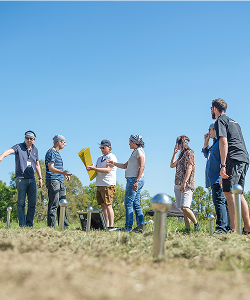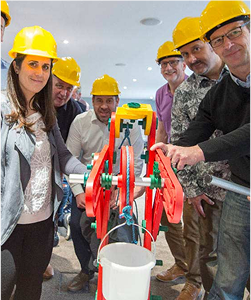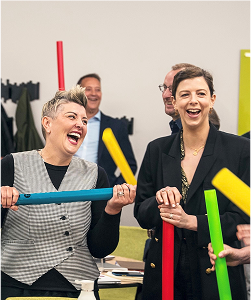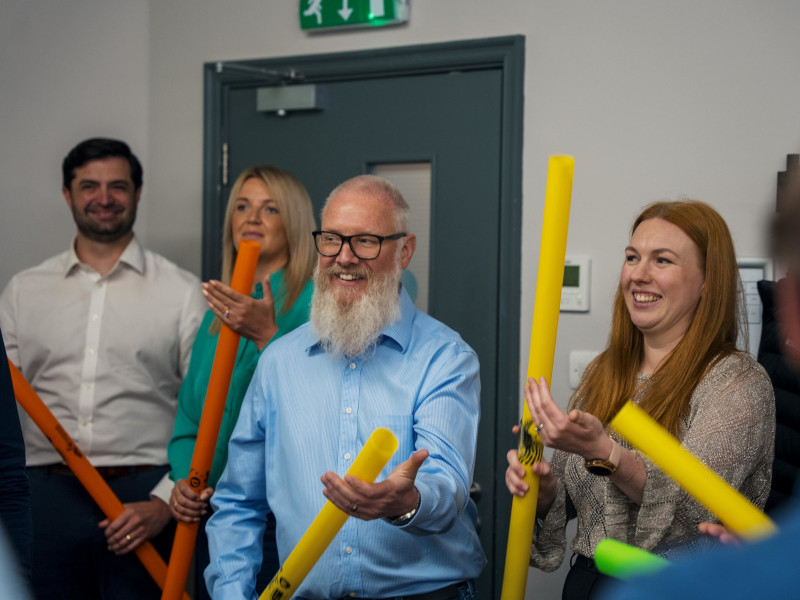Patrick Lencioni and Teamwork - The 5 dysfunctions of a team
“Not finance. Not strategy. Not technology. It is teamwork that remains the ultimate competitive advantage, both because it is so powerful and so rare.” -- Patrick Lencioni
High performing teams are the cornerstone of healthy and cohesive organisations. Building these teams is not a complicated task, but many leaders fail because they allow one of the following issues to manifest within the team.
- Absence of trust
- Fear of conflict
- Lack of commitment
- Avoidance of accountability
- Inattention to results.
Absence of Trust
A team without trust is not really a team. It is a group of individuals making disappointing results. Trust gives a sense of safety and, thus, the confidence to be open about their own strengths and weaknesses. It is about exposing your own vulnerabilities. It is feeling comfortable when you have made a mistake or being able to acknowledge when someone is better at something than you. It is about apologising gracefully when you have done something wrong.
Vulnerability drives collaboration, creative thinking and open communication.
Ways to build trust
- Personal History exercise
Examples of personal history exercises can be found here. (Link on TBCo Website)
Personal History exercises are useful because they allow us to demonstrate vulnerability in a low risk way. This helps us to relate to each other on a more personal level and makes us less judgemental.
- Behavioural Preferences
Link to Insights Page on TBCo
One of the most effective ways of building trust on a team is to do an exercise on team members behavioural preferences. This is an effective way to break down barriers and allowing people to better understand and empathise with each other. The Insights Discovery Report (Link to the Insights recover report on TBCo) provides a useful guide to a person’s behavioural preferences, communication strengths and weaknesses and advice about how better to contribute to teams.
Fear of Conflict
There is a difference between heathy and unhealthy conflict. Healthy conflict moves a topic forward and is focused on solutions. Unhealthy conflict is backward looking and centres on blame and judgement.
Healthy conflict is essential for high performing teams but can’t take place without vulnerability and trust. To engage in good conflict, you need to trust the other person. You need to know that they will admit if they are wrong or believe your idea is better than theirs. You know they are happy to be vulnerable.
Therefore, you are confident that when you are disagreeing with a colleague, they are only motivated by the pursuit of the truth rather than winning for the sake of winning. You colleague is challenging you in order to get a better result for the team rather than trying to pull you down.
At work if we disagree with someone and don’t articulate it, then we have ducked a difficult conversation. We believe we are being good and kind by avoiding the conflict. However, postponing the conversation simply makes the situation worse. When we avoid the issue, it kicks around, ferments and comes back as a personal issue.
Learning to have more challenging conversations drives more productive results.
Tools for overcoming the fear of conflict
- Prepare yourself to be uncomfortable
Most people will do anything to avoid a difficult conversation. They want to stay comfortable. For meetings to be productive, discussions will often be difficult, uncomfortable and exhausting. When we duck these conversations, meetings lack drama, are dull and unproductive. The role of the leader is to help each person in the team to express their opinion without fear. - Celebrate conflict in your meetings
Next time there is an uncomfortable moment during a meeting, interrupt the discussion and remind everyone that their contribution is valued. Quick intervention by the team leader to reduce the level of anger and frustration in the meeting is required to restore feelings of cohesion and trust. - Behavioural Preferences
Take time to understand your own behavioural preferences when it comes to conflict.
Insights Discovery (link to Insights on TBCo website) details this in their reports and provides tips on how you respond can respond to conflict more effectively but also work more effectively with colleagues when you have a challenging conversation.
Lack of Commitment
Commitment is not about consensus. If you want commitment you need to ask people what they think, but it is also being clear that you won’t necessarily adopt their suggestions. When all members of the team feel welcome and believe that they are allowed to express ideas and opinions, the team becomes more committed.
If someone is quiet, then the leader needs to ask them for their opinion. Most people will give their opinion when asked.
Watch out for the introverted and extroverted preferences on your team. The extrovert has 4 great ideas and will give you 10 ideas which you need to sift through. The introvert has 8 great ideas but will only give you 3 and you need to work hard to pull out the others.
Leaders need to know how to get the best from each person. It is easy as a leader to believe that the quiet person in the meeting will speak up when they have an idea. The problem is these people won’t fight to get their ideas out and hence the leader needs to support them in doing this.
Andrew Gove at Intel popularised the concept of “Disagree and Commit.” The principle was that whilst a decision is being considered everyone can disagree, poke holes in it and debate the issues. However, once a decision has been reached, every team member needs to Accept and be committed to that outcome.
In a sports team, you might see this play out where a player will challenge a coach about game tactics during a practice session. The expectation is that all views on game tactics are flushed out during the practice session where everyone’s views have been heard and there is then a commitment to the agreed tactics. Once the team gets to the match, the player can’t hijack the team huddle because they still don’t agree with the match tactics.
Most people can support something they don’t agree with so long as they were heard and understand the “why” of the decision.
Tools for driving more commitment
- Written commitment
Tell the team that following all the debate you now need to make a decision. Ask the team to come up with their answer and to write it down. You then go around the room and ask each person to share their answer. Because they have written it down they will be more committed to it.
- Know how each person on the team makes decisions
Are some people in your team happy to make an instant decision, or are others more analytical and require time, whilst others may be sensitive to the feelings of others. It is useful to understand this when you implement disagree and commit. To learn more about how people on your team make decisions look at the Insights Behavioural decision-making model.
Accountability
In a team situation, accountability is focused at the team rather than at the individual. It is a crucial but often neglected component of good team management. Criticism of colleagues should be avoided.
If someone didn’t buy into the decision in the first place, why do you think you are going to be able to hold them accountable? If I am in the huddle and the guy isn’t doing what we agreed why would I challenge him when I know that he doesn’t care.
If we went through this as a team and he committed, then you can hold him to account because he will care.
Therefore, the most effective way of ensuring personal accountability to making sure that commitment has taken place.
There are two forms of accountability – behavioural and performance. Behavioural accountability comes first. If you wait for the numbers then it is too late.
If a football player is coming to practice and he is continually late or not working out hard, are you going to wait to see if he fumbles in the game or are you going to tackle the behaviour which is a predictor of future results.
People hate holding each other to account because it feels mean and judgemental. However, when a person makes a public commitment They are held accountable for their future actions.
“The behaviour precedes results”.
Tools for developing accountability
Lencioni recommends this team effectiveness exercise.
- Team members identify for each colleague in the team:
- The one behaviour each colleague brings which enhances the team
- The one behaviour each colleague brings which hurts the team
- Starting with the leader, the team share their thoughts on the behaviour which enhances team performance. Once everyone is heard the team then share their thought on the behaviour exhibited by the leader which undermines the strength of the team.
This exercise provides very powerful insight for team members about how they are valued by their colleagues but also what they might consider doing differently in order to be more effective. Feedback themes tend to repeat for each person.
This is the cheapest and fastest 360 you will EVER do. Everyone walks away with one action to focus on. There is an opportunity to follow up 3 months later and hold each team member accountable for the behaviour they were going to focus on. This is a very powerful way to change culture.
Inattention to results
Everyone tends to be results orientated and this isn’t the problem. The challenge is whether the senior team in particular are focused on the organisation’s / team’s results or their own? Am I more concerned about my pet projects or the health of the business? Is everyone in the team more worried about their own needs or the collective results?
It is making sure that the team is functioning like a football team rather than a golf team. If the leadership team is sitting in silos and hoping that all the individual results will add up, then that won’t work. Everyone is just doing their own thing.
Tools for managing inattention to results
Every team needs to have a thematic goal or rallying cry. What is the one thing that we need as an organisiation? You need to set the collective goal first and then look at how each department functions within that.
















































